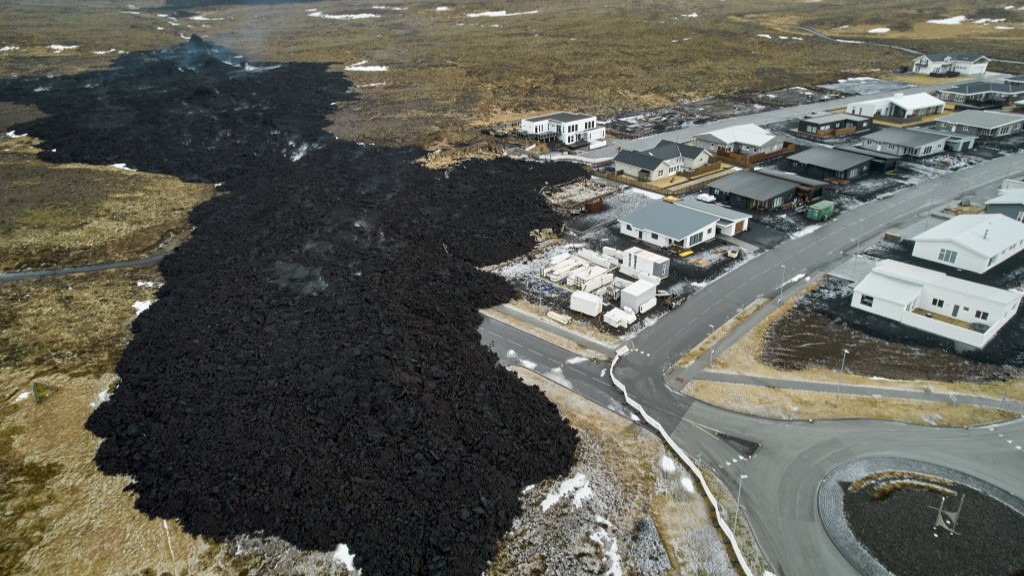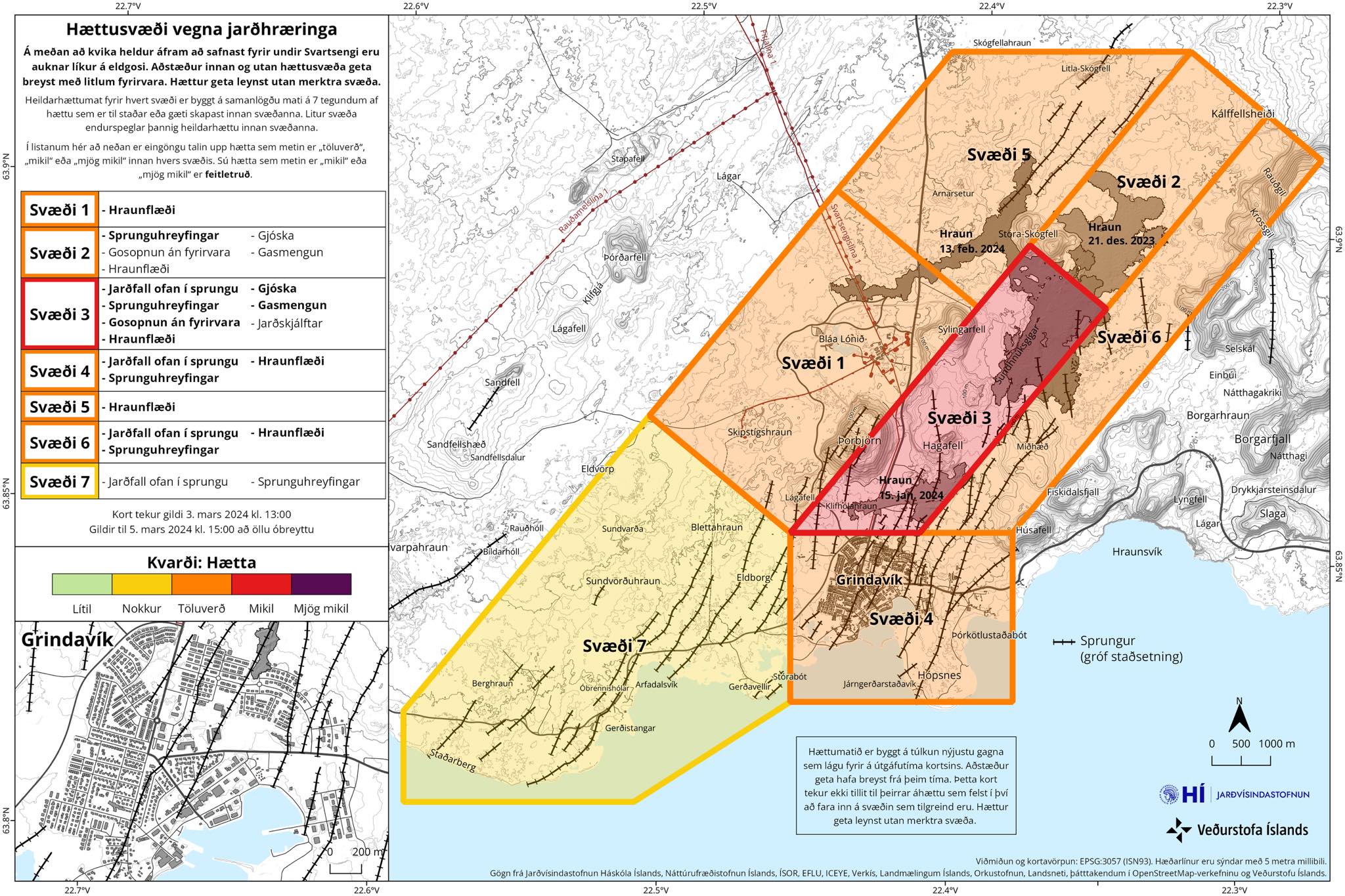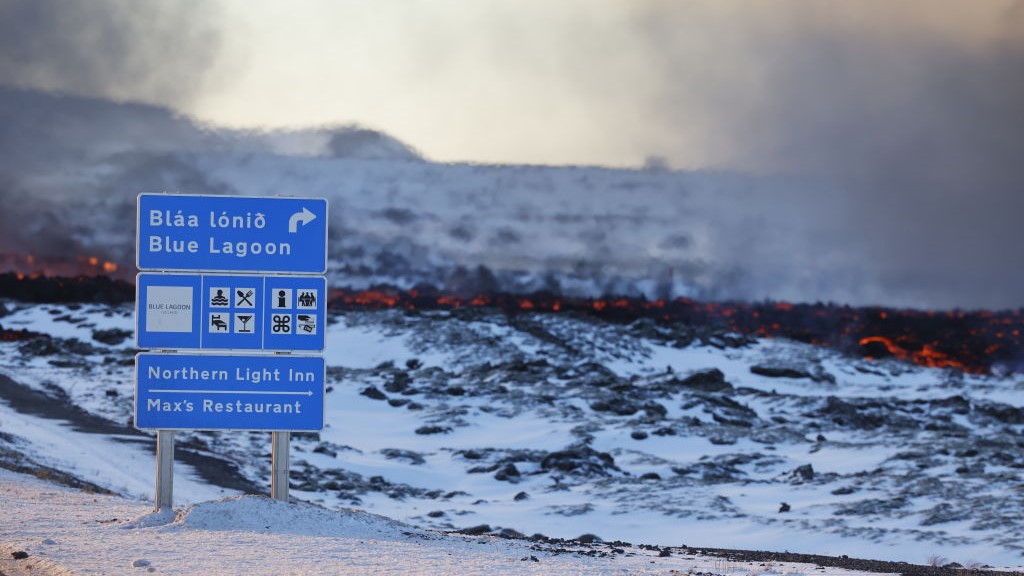Iceland volcano: Grindavík evacuated over eruption threat, residents warned they 'enter the town at their own risk'
Icelandic authorities have advised residents and employees in Grindavík against staying in the town as the risk of a new eruption and of cracks opening up increases.

Icelandic police have advised anyone entering Grindavík to exercise extreme caution and warned there is a danger of cracks opening up outside fenced-off areas in the town. Grindavík and the surrounding area were evacuated on Saturday (March 2) due to the risks posed by an imminent volcanic eruption on Iceland's Reykjanes Peninsula.
The volume of magma accumulating beneath Svartsengi, 2.5 miles (4 kilometers) north of Grindavík, will reach 318 million cubic feet (9 million cubic meters) by the end of Tuesday (March 5) — well within the range of previous eruptions, according to a translated statement from the Icelandic Met Office (IMO). A hazard map released by the IMO shows the areas most at risk.

"Grindavík was evacuated yesterday, as well as the Svartsengi area, where it was believed that an eruption could start then and there," representatives of the Icelandic Civil Defense wrote in a translated statement posted on Facebook on Sunday. "In Grindavík, there is considered to be a high risk of landslides into cracks, lava flows and crack movements."
Residents were allowed to return to the town following the last eruption on Feb. 8. Grindavík is partly protected from lava flows by ramparts, but some of these are still under construction. The town also remains vulnerable to crack collapse, according to the statement.
"Residents and employees enter the town at their own risk," representatives wrote. "The police chief makes it clear that Grindavík is not a place for children or for children to play. There are no functioning schools and the infrastructure is in a state of disrepair. The police chief does not recommend that people stay in the town."
Seismic activity recorded over the weekend at Sýlingarfell, 3 miles (4.8 km) northeast of Grindavík, indicated that magma was on the move and flowing south toward Grindavík through an underground corridor. The magma run ended a few hours later without reaching the town, but the risk of an eruption is still high, according to the IMO.
Sign up for the Live Science daily newsletter now
Get the world’s most fascinating discoveries delivered straight to your inbox.
"It is to be expected that another magma flow can occur in the next few days and there is an increased probability of an eruption," IMO representatives wrote. "[The timing of] the next magma flow depends on how fast the pressure due to the accumulation of magma under Svartsengi builds up to set it off."

A new eruption could start with less than 30 minutes' notice, authorities warned. The volcano is most likely to erupt in the area between Stóra-Skógfell and Hagafell — 3.7 to 1.2 miles (5.9 to 2 km) northeast of Grindavík — with a high risk of lava flows in the vicinity of the Blue Lagoon resort, the Northern Light Inn and HS Orka geothermal power plant in Svartsengi.
Between 600 and 800 guests at the Blue Lagoon were evacuated from the resort over fears of an imminent eruption on March 2, the Iceland Monitor reported.
Important infrastructure in the area has been protected from lava flows with fortifications, according to the Icelandic Civil Defense. "Conditions inside and outside danger zones can change with little notice," representatives wrote. "Dangers can be hidden outside the marked areas."
Although unlikely, the possibility that an eruption might occur in Grindavík itself cannot be ruled out, they added.

Sascha is a U.K.-based staff writer at Live Science. She holds a bachelor’s degree in biology from the University of Southampton in England and a master’s degree in science communication from Imperial College London. Her work has appeared in The Guardian and the health website Zoe. Besides writing, she enjoys playing tennis, bread-making and browsing second-hand shops for hidden gems.










